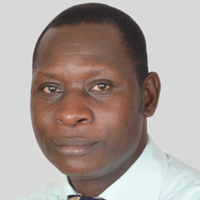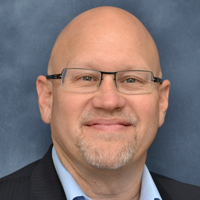
Dr. Charles Kiyaga
National EID/VL and Sample Transport Coordinator at the Ugandan Ministry of Health
Accessing patients for CD4 testing can be challenging in remote areas where many patients are in late stage advanced HIV.
What are the challenges faced by people in remote areas when it comes to HIV/AIDS testing?
The main challenge is access. People in remote areas can be very poor, so it can be difficult for them to physically travel to the service point — and expensive, too, although the treatment itself is free in Uganda. The service points can also get overcrowded and have limited resources, so there could be lots of waiting around. They may even be told to come back another day.
Can you explain how Uganda’s National Sample Transport Network has improved things?
It’s based on a ‘hub’ and ‘spoke’ model, where 100 ‘hubs’ — big health facilities with laboratory infrastructure — are connected to around 3,000 ‘spokes’, or lower health facilities, via bike riders. They pick up samples from the spokes every day and bring them to the hubs for testing, and for further referral for those that cannot be tested at the hub. It has been phenomenally successful.
How important are demand generation strategies in this area?
Vital. It’s one thing to set up a service — but it’s quite another for it to be used by those who need it. So we have to get the message out to people in order to empower them to demand the service. It’s also important to prepare the system itself, so that it’s ready and able to cope when the demand increases.
How do you get the message out to people in remote areas?
All health facilities have patients’ groups, which together, create a patient network. Giving patients networks information about the service through their network creates an effective trickle-down effect.

Tom Chiller
Chief, Mycotic Diseases Branch, the Centre for Disease and Control Prevention
Which key populations are most at risk from advanced HIV?
My expertise is in fungal diseases. These are types of opportunistic infection that occur in people with weakened immune systems and can be fatal. People who have low CD4 counts — below 200 — are at very high risk of opportunistic infections.
Why do HIV patients need access to CD4 testing?
The only way to understand if they are at risk of an opportunistic infection is to get a CD4 count — via a simple blood test — and then start them on antiretroviral therapy (ART) as quickly as possible. There is a caveat to that, however. If individuals with advanced stages of the disease are given ART, they may suffer from potentially fatal immune reconstitution inflammatory syndrome, or IRIS. So clinicians need to know a patient’s CD4 count to be able to make the best healthcare decisions.
Is there confusion about CD4 testing and viral load testing?
I think there is, but these are two very different tests. Viral load measures the virus itself and is a critical way for clinicians to understand how ART treatment is working; whereas CD4 measures a person’s immune status. A patient only needs a CD4 test before they are started on ART. If they stay virally suppressed, they won’t need a further CD4 test.
Does CD4 testing improve patient care overall?
Absolutely, so we need to make sure HIV programmes understand when CD4 testing should be used. It will help them target their resources in a more appropriate manner so they can get the best outcomes for their patients.

